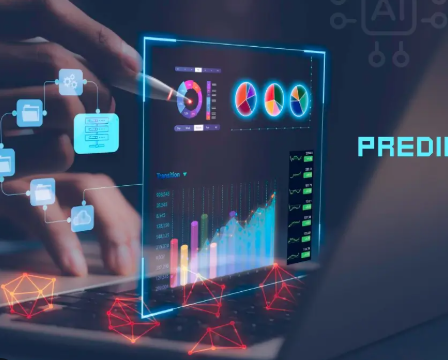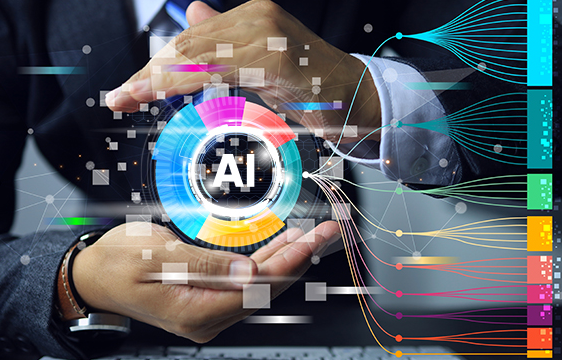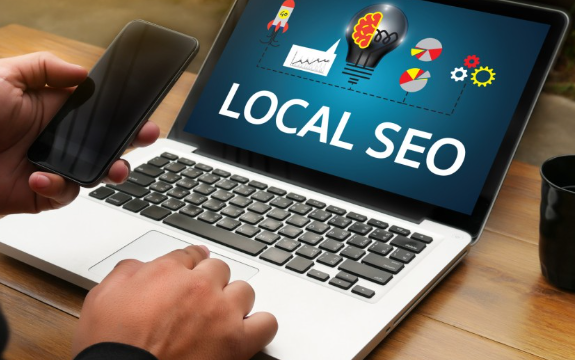In today’s digital landscape, users expect websites to be tailored to their needs and preferences. Generic, one-size-fits-all websites often result in high bounce rates and lost conversions. AI-driven personalization is changing this by dynamically adapting website content, product recommendations, and user experiences based on real-time visitor behavior.
By leveraging machine learning, natural language processing (NLP), and predictive analytics, AI can create hyper-personalized website experiences that improve engagement, reduce bounce rates, and boost conversions.
This article explores how AI-based personalization enhances website experiences and provides actionable strategies for implementing it.
1. What is AI-Based Website Personalization?
AI-based website personalization uses real-time data, AI algorithms, and user insights to deliver customized experiences to each visitor. This includes:
✅ Dynamic content adaptation based on visitor behavior
✅ Personalized product recommendations
✅ AI-driven chatbots for instant support
✅ Optimized navigation based on user preferences
✅ Real-time behavioral tracking and predictive suggestions
Unlike traditional personalization, which relies on manual segmentation, AI continuously learns and adapts based on user interactions.
2. How AI Personalization Enhances Website Experiences
1. AI-Powered Dynamic Content Personalization
AI analyzes user behavior—such as browsing history, time spent on pages, and clicks—to tailor website content dynamically.
🔹 Examples:
- E-commerce: AI suggests products based on past purchases.
- News Websites: AI curates articles based on reading history.
- SaaS Platforms: AI recommends features based on user engagement.
2. Personalized Product & Content Recommendations
AI-powered recommendation engines (like those used by Amazon and Netflix) predict what users are most likely to be interested in based on their behavior.
🔹 AI Tools Used:
- Google Recommendations AI for personalized product suggestions
- Dynamic Yield for AI-driven content personalization
- Clerk.io for e-commerce personalization
3. AI-Driven Chatbots & Virtual Assistants
AI chatbots provide real-time customer support, helping users find what they need faster. Advanced chatbots use NLP to understand queries and provide personalized assistance.
🔹 Example:
- A travel website chatbot suggests destinations based on a user’s past searches.
- A retail chatbot offers product recommendations based on purchase history.
4. Adaptive Website Navigation & Layouts
AI dynamically adjusts website layouts, menus, and navigation elements based on user preferences.
🔹 Example:
- If a visitor frequently searches for “Men’s Shoes,” the site automatically prioritizes footwear categories in the navigation bar.
- If a B2B user shows interest in enterprise solutions, the website highlights enterprise-specific features.
5. Predictive Search & Smart Auto-Suggestions
AI enhances search functionality by offering predictive auto-suggestions based on past searches, trends, and intent.
🔹 Example:
- An e-commerce search bar predicts the exact product a customer is looking for before they finish typing.
- A content website suggests trending articles based on search intent.
6. AI-Powered Behavioral Targeting
AI segments users based on behavioral patterns, interests, and demographics, ensuring they see the most relevant offers, discounts, and content.
🔹 Example:
- A new visitor sees a welcome message with a discount.
- A returning customer receives product recommendations based on previous orders.
3. Best AI Tools for Website Personalization
Here are some top AI-powered tools that help create dynamic website experiences:
| AI Tool | Key Features |
|---|---|
| Adobe Sensei | AI-driven content and layout personalization |
| Dynamic Yield | Predictive recommendations and A/B testing |
| Optimizely AI | AI-based website testing and experience optimization |
| Google Recommendations AI | Product and content personalization for e-commerce |
| ChatGPT API | AI chatbot for real-time customer interactions |
| Evergage (Salesforce) | Real-time website personalization and audience segmentation |
4. Future Trends in AI-Based Personalization
🔮 1. AI-Powered Voice & Gesture-Based Navigation – Websites will adapt layouts and content based on voice commands and gestures.
🔮 2. AI & Augmented Reality (AR) Shopping – AI will enable virtual try-ons and interactive shopping experiences.
🔮 3. AI-Powered Sentiment Analysis – Websites will adjust tone and messaging based on user sentiment and engagement levels.
🔮 4. AI-Generated Personalized Video Content – AI will auto-generate videos tailored to individual users.
Conclusion
AI-based personalization is revolutionizing website experiences by making them more dynamic, engaging, and user-centric. By leveraging AI for real-time content adaptation, product recommendations, chatbots, and behavioral targeting, businesses can:
✅ Increase engagement and conversions
✅ Improve user satisfaction and retention
✅ Reduce bounce rates and optimize sales funnels
As AI technology advances, brands that embrace AI-driven website personalization will gain a competitive edge in the digital space.






